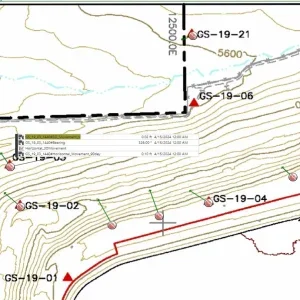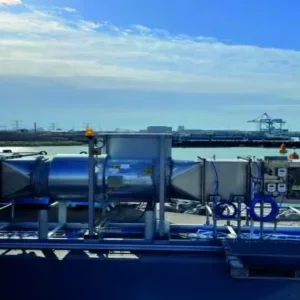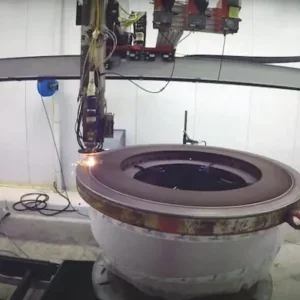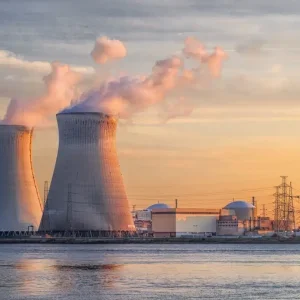INDIA offers a vast field of opportunity for uprating and refurbishing (U&R) hydro power plants. A detailed survey undertaken in 1987 identified some 55 hydro plants for U&R, but the utilities have been slow to implement the ensuing five-year action programme, for a number of operational and financial reasons. A second phase of the programme is to begin this year, with 100 hydro stations targeted for U&R in the next five years.
Ageing hydroelectric plants have been a problem for the Indian industry for several decades now. Considering the first such plant was set up back in 1897, the problem has now become quite acute. In a survey carried out at the end of the last century it was determined that out of 585 generating units: 46 were over 50 years old; 29 were in the 40-50 year old group; 99 in the 30-40 year group; 101 were 20-30 years old; and 111 were in the 10-20 year bracket.
Early attempts to renovate the old plants were half-hearted and did not tackle the problem in its entirety. Efforts were directed at resolving technical problems and were determined by the amount of funds that could be spared by the owner-utility, mainly government owned state electricity boards (SEBs).
The federal government pushed uprating and refurbishment efforts in the late 1980s by initiating a comprehensive, methodical survey of old hydro plants which needed U&R.
From this evolved a national programme of action. It aimed to bring about acceptable standards of safety, improvements in plant availability and reliability, life extension, a reduction in outages, recovery of lost capacity and uprating of plant capacity.
The original phase of this programme, initiated in 1987, was to cover the U&R of 55 hydro stations, comprising 193 units with a total capacity of 9653MW. On completion, this was expected to give an additional 2531MW of capacity and around 7181M kWh of additional generation per annum.
However implementation of the programme has been tardy for a variety of reasons. Whereas previous UR projects focused almost entirely on re-engineering, the time had arrived to take a holistic approach, bearing in mind other aspects and consequences of hydro power and correcting early mistakes. This would include:
• Prioritising environmental concerns. Any new technology or equipment used during U&R needs to be eco friendly.
• Plans to include remedial measures for land degradation, loss of tree cover, or damage to fisheries and aqua-culture that have occurred at a station since construction.
• Dovetailing U&R plans with plans for overall exploitation of hydro potential in the area. Under normal circumstances it would be ecologically less damaging to establish uprated or existing generating units at an existing plant rather than setting up a new hydro station in the area.
• Keeping the local population informed of all plans and developments.
Many financing arrangements have become available for U&R in India from financial institutions, both domestic and international. The main source of U&R funds is the federal power bank, New Delhi-based Power Finance Corporation (PFC). Other sources have also been tapped in the past, including:
• Lease finance. PFC itself has extended this facility since 1995, and a few other private agencies have followed suit. This source is most suitable for locally-made equipment, though PFC covers the lease of imported machinery too.
• Supplier’s credit. This is available both from the original equipment supplier and the one who vends UR machinery. In some cases, the EPC contractor may also extend this credit.
• Commercial banks. The domestic banks and financial institutions in India had been the traditional lenders to the SEBs, but the present state of SEB finances and the long gestation of a hydro project have been dissuasive factors. Lines of credit have been more readily available from foreign banks and Fis. For example, Germany’s KfW lent US$23.5M through PFC for the U&R of Koyna I and II (560MW) and two units (48MW) of the Hirakud II stations.
• Export credit agencies of some countries became active in India when the power sector became open for private investment. US Exim Bank and Japan’s OECF (now JBIC) have either funded Indian power projects or have looked at opportunities for doing so.
• Bilateral country-credits. Under bilateral arrangements between the Indian government and a number of developed countries, concessional credits have been available for a long time. The UK, Germany and France have all been the sources of original equipment installed in many Indian hydro stations. The UK’s ODA (now the DFID), under a US$38.9M grant, financed the U&R of two 75MW units at Hirakud in Orissa.
• Multilateral agency credits. Agencies like the World Bank, Asian Development Bank and IFC have increasingly offered to get into efficiency-improvement areas like U&R. In the 1990s, the World Bank even part-funded U&R of the 712.8MW Sharavathi hydro station in southern India.
Despite the priority given by the federal government and the fact that most U&R financing was arranged by it or its agencies, the progress of U&R in India has remained slow. The federal hydro utilities have taken advantage of the offered facilities. The SEBs, however, dragged their feet for a number of reasons. Firstly, there was an operational problem: the difficulty in shutting down a power station for U&R in the context of a persistent power shortage. India has suffered from recurring power deficits: an overall 8% shortage, which rises to 13% and beyond during peak periods. In the northern region, which has a large number of hydro stations, shortages greatly exceed the national average. Generally, the country’s hydro stations are operated as a base power source and not merely for peaking power.
At times technical staff may hesitate to complete major overhauls of old but operational hydro power stations, because they fear that what began as an U&R may well lead to the scrapping of entire plants.
The SEBs also faced difficulties in mobilising sufficient funds for U&R projects. Most, being in the red, were ineligible for institution lending, some even from PFC. Then again, while a PFC loan covered the main part of the cost, the SEB still had to arrange for balance funds, which was not an easy task. Its own internal resources were quite unequal to its requirements.
Private investment
Since 1991, various areas of the Indian power sector have been opened to private investment. This injection of cash was needed more in U&R than in any other branch of the industry. So, in 1995, the federal government issued policy guidelines for inviting private investment in the renovation, modernisation and uprating of the country’s existing generation stock. This could take the form of a lease, rehabilitate, operate and transfer agreement; the owner-utility of the plant could sell it to the private party; or the owner-utility could enter into a joint venture with a private party.
Of these three options, the first seems to best reconcile the interest of both the private investor and the owner-utility. Selling the plant is the best option if the utility is so cash-strapped that it cannot fulfil its obligations, or it needed ready cash to invest in other schemes. The attractiveness of this option is enhanced if the sale forms part of a broader scheme to restructure the SEB and the latter permitted the direct sale of power by the new owner to bulk consumers and/or private distributors.
The third option, joint venture, has some of the advantages of the first option. The stake of the SEB in the joint venture would ensure a smoother takeover, easier receipt of government approvals and a continuing liaison with the local and state authorities. In these ventures it would be usual for the plant operations and management to be entrusted to the private partner, who would arrange for fixed and working capital.
For any of these options to succeed, a number of factors need to come into play:
• Proper identification by the SEB/state government of removable plants, a study by consultants and the preparation of detailed project reports.
• Obtaining the necessary government approvals in advance.
• Selection of the private party through competitive bidding and shortlisting.
• Adequate security to be offered to the private investor, along with fair and equitable risk allocation.
• The tariff to be determined in the context of the relevant technical norms and financial parameters.
• A practical arrangement for the distribution of power generated at the renovated plant.
There also has to be drawn up a fair set of project covenants that take due care of the interests of either party.
Nevertheless, private investment in U&R has been slow in coming. Dr KK Govil of PFC suggests that this is because the SEBs had not been proactive in seeking private participation. There is also a lack of an assured rate of return to the private promotor, unlike a Greenfield project. He adds that the current defects of the SEB-operated power distribution system, which leaks revenues, act as a huge disincentive to the private promoter.
Govil suggests that much needs to be done to attract private investors. Firstly, power reforms must be speeded up to improve the credit-worthiness of the SEBs. Then U&R and life-extension studies should be undertaken on all old plants. Distribution networks should be restructured as cost and profit centres, and there must be clarity on the pricing of power generated after U&R.
Related Articles
Spotlight on … uprating and refurbishment






